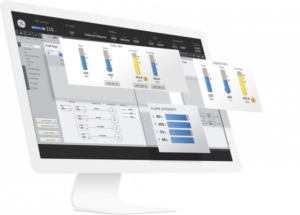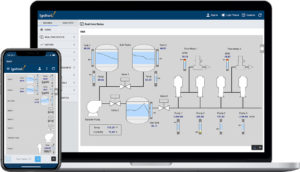HTML5 is Providing Flexibility on the Plant Floor
“HTML5 is a markup language used for structuring and presenting content via a Web Browser. It is the fifth and latest major version of HTML which is a World Wide Web Consortium (W3C) recommendation.” https://en.wikipedia.org/wiki/HTML5
The challenge of providing visualization and remote control of production processes has been addressed by various means through the years as technology has evolved. Some automation vendors developed solutions based on ActiveX or Adobe Flash rendering of Human-Machine Interface (HMI) screens, while others delivered Remote Desktop Services (RDS) based connections and visualization of the production process. While these solutions do enable broader access to plant floor systems, they rely on proprietary and custom software solutions to be installed and supported on the clients’ computers.
Since the first public draft of HTML5 in 2008, developers and designers have been finding ways to create HTML5-based HMI applications. The October 2014 release of HTML5 standards, which included native support and handling of multimedia and graphical content, was a game changer for developers. With the new <video>, <audio> and <canvas> elements added, as well as support for scalable vector graphic (SVG) content, developers are able to create rich animated HMI graphic applications that are on par with legacy HMI solutions.
Applications written in HTML5 are platform independent. They natively support iOS, Android, Windows and other platforms, as opposed to traditional solutions developed for specific computer systems. As a result, HTML5 provides a cross-platform approach for automation control and reporting solutions, offering industrial users the same flexibility and benefits they’ve come to expect from mainstream business applications.
Different approaches for delivering HTML5 content:

GE Proficy Webspace extends the iFIX or CIMPLICITY application’s viewing and control abilities into a Web browser
Some automation software providers, including Wonderware, InduSoft, GE and Rockwell introduced HTML5-based Web Clients to their legacy HMI applications, empowering users to access selected graphic screens from the traditionally developed HMI application via a web browser. While the HMI application is created using the legacy HMI development platform, the graphic screens are also deliverable via web browser connection, expanding user choices to access these applications.
On the other hand, Open Automation Software, Backhoff and Inductive Automation were among the first to introduce HMI applications built from the ground up, based on HTML5 standards. These visualization tools deliver ease of developing mobile and desktop display screens, using the power of HTML5, CSS, JavaScript, jQuery and JSON. By utilizing these standard platform-independent technologies, developers can create innovative HMI content or integrate HMI functionality into existing web applications with minimal effort.
Benefits of HTML5-based HMI applications:

Ignition HMI software’s responsive layout automatically adjusts the screen’s content to the client device resolution.
HTML5- or web-based Human-Machine Interface applications offer the benefit of displaying and controlling production processes on less expensive hardware options, in comparison to traditional HMIs, which require high-end Windows workstations. From the same computing platform, users can access plant floor as well as business systems. Since the application is hosted on a centralized server, the ongoing maintenance, support and deployment of new releases requires less effort. Changes are made on a centralized server, and users of the application automatically receive the newest updates.
Another benefit of HTML5-based HMI is the ability to develop more intuitive and responsive applications that properly render to all client devices. These applications automatically adjust the graphic screen’s layout to match the client device resolution. They deliver the same content whether on a smartphone, tablet or high-resolution computer monitor.
In conclusion:
Both traditional and HTML5-based HMIs provide specific value and benefits. With everchanging technology, our role as System Integrators is to educate our clients regarding the latest technology offerings, and help them make informed decisions on the best HMI development platform for their application needs.
